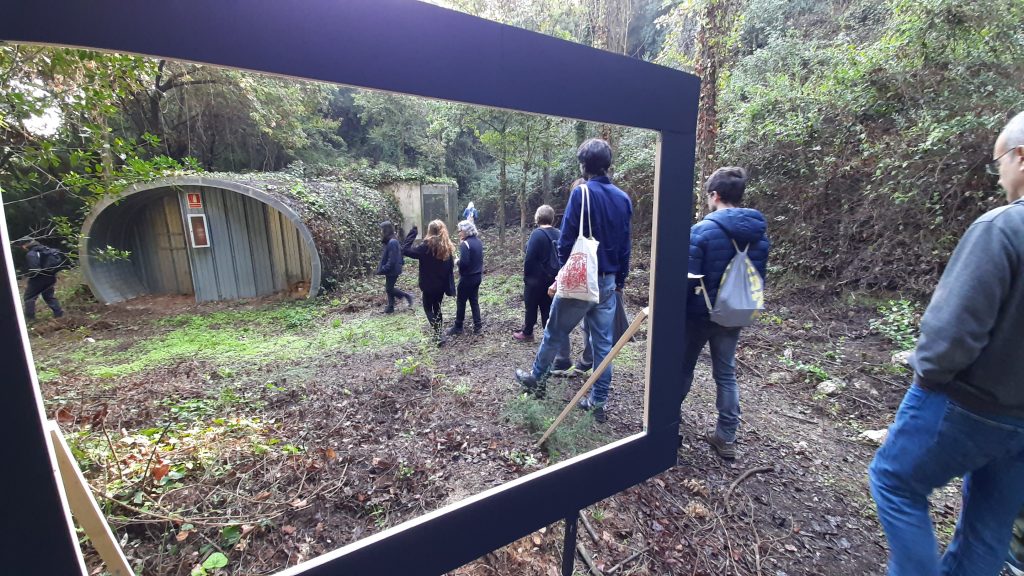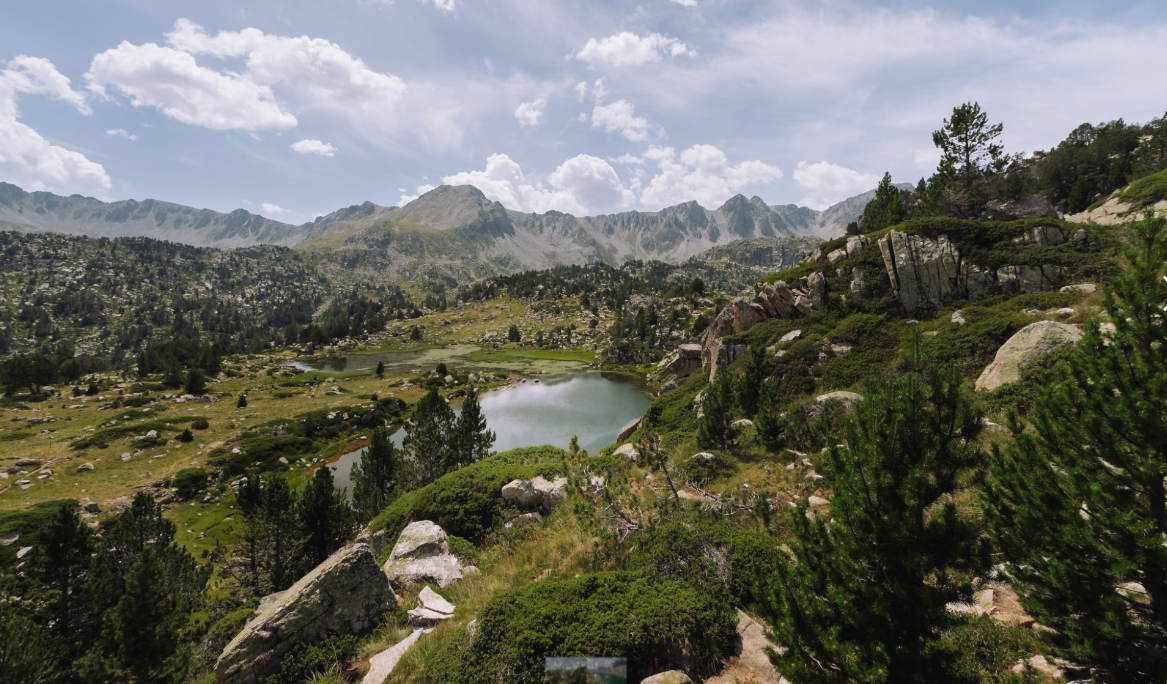At CREAF we are moved by ecology, but also by art. PThat’s why we took part in a day organised by the artists Agustín Ortiz Herrera and Carola Moujan, residents of our Can Balasc station, in collaboration with the creative factory La Escocesa. The day allowed us to reflect on the meaning and significance of the forest and its elements in the social, historical, symbolic and biological spheres.

We started the day in the Parc de Collserola (Barcelona), surrounded by the green of the trees and the grey of the morning mist. The group that makes up the outing is diverse: biologists, physicists, artists and, as masters of ceremonies, Carola Moujan and Agustín Ortiz Herrera. After the usual introductions, we set off on the route to Can Balasc, the biological station of the Parc de Collserola (Barcelona). We cross housing estates and motorways and enter the forest, where the noise of the cars is muffled, although it always accompanies us. Agustí invites us to reflect on these apparently antagonistic connections: how the sound of cars is as much a part of the forest as the sound of birds, how endemic plants share space with foreign ones, and how the paths trodden by humans are created with those marked by wild boar or shrews. Carola and Agustí show us part of the fruit of their artistic stay at CREAF. In the middle of the forest there are black wooden rectangles that frame an artificial pond or a badger study station engulfed by ivy and moss. These frames are intended to be deconstructions of the traditional dioramas of European and colonial heritage used in Nature Museums.

Once the excursion is over, we head for Can Balasc, where Carola has a couple more surprises in store for us. The diverse group of us congregate and look around us from the brick hut adjacent to the farmhouse, grateful for the shade and coolness it provides. We are surrounded by various elements that have been part of this artistic research process: a long table full of flowers, seeds, leaves and branches duly labelled, seedbeds with budding shoots, a map of Collserola and a table with cards containing drawings of species with their scientific and common names indicated.
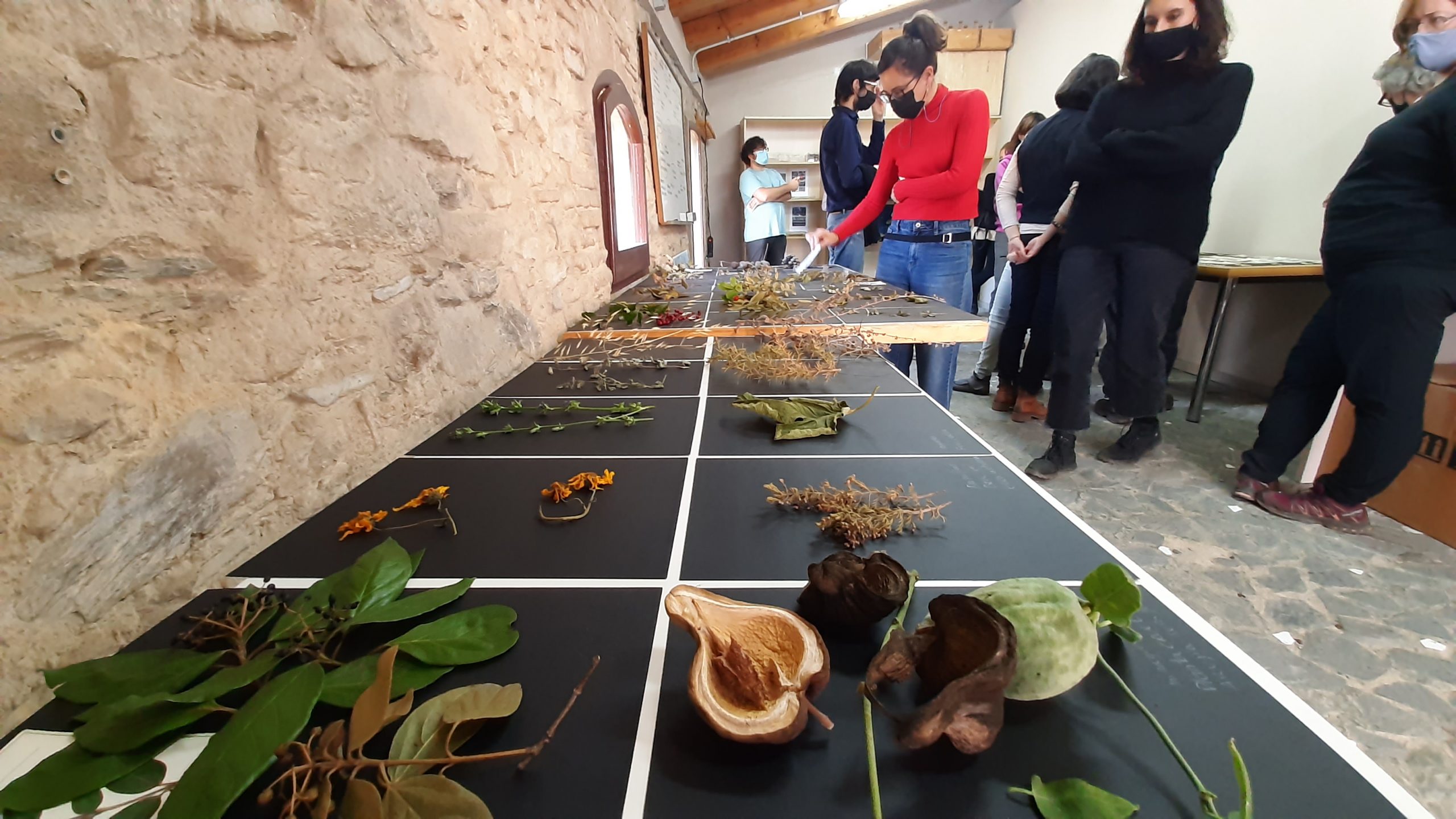
Carola invites us to make groups of three with the cards of these species and stick them on the wall. The critery? The one we decide. The previously bare wall is filled with cards and, when there are no more, we stick post-its or drawings of plants with their common or scientific name. The taxonomies that are generated reflect the diversity of the group of participants; thus, while some people use criteria such as their geographic or altitude distribution, others group the species by the social, historical or folkloric implication of their common name or, even, by personal criteria, such as a childhood memory . The collage mural that has been built collectively contradicts the perception of taxonomies as something rigid and immovable and makes us think of a more flexible concept, inevitably linked to the subjective background of each one.
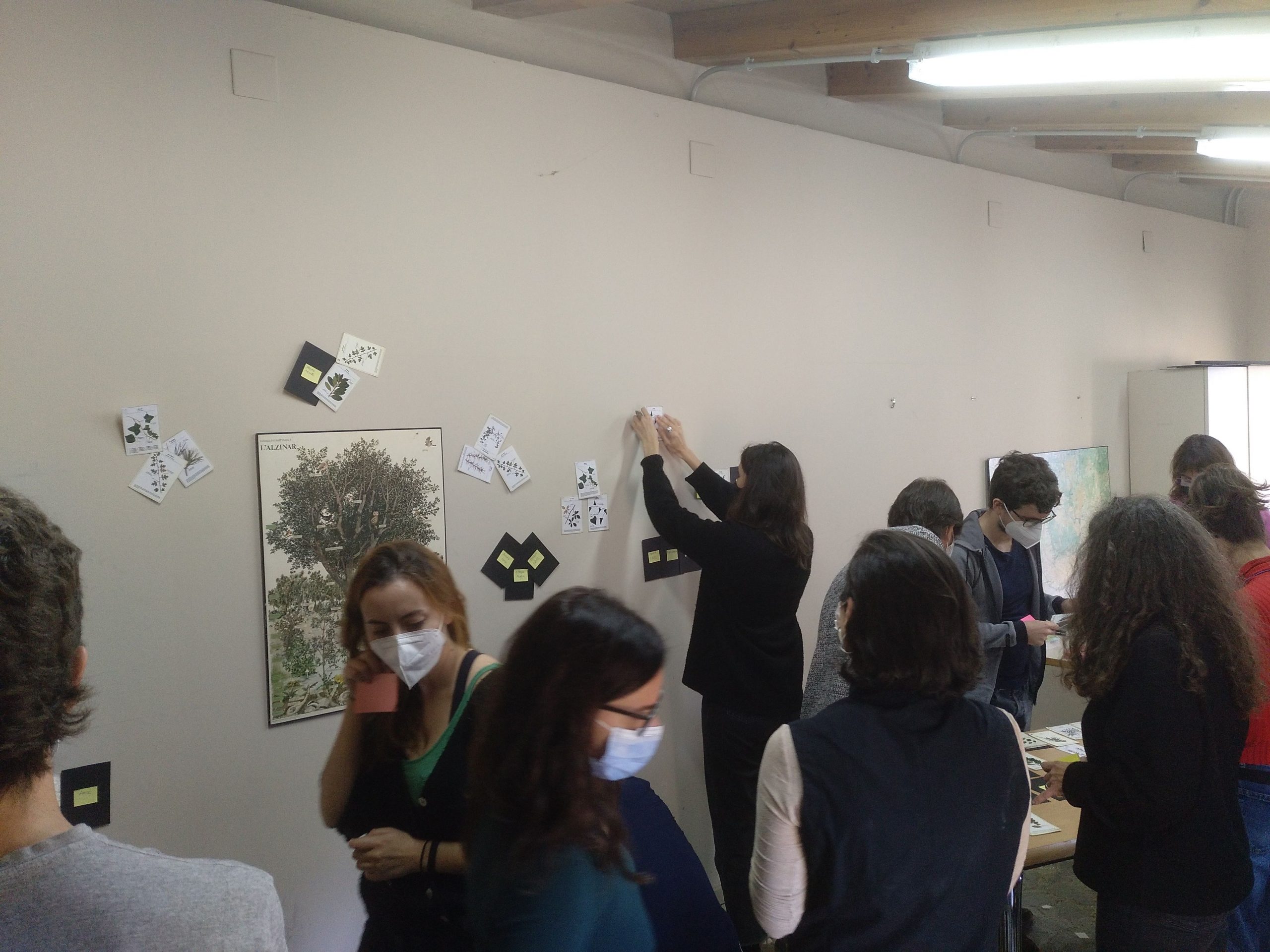
Carola then directs our attention to a magnetic whiteboard: it contains a diagram that breaks down the idea of the forest into different cultural, geographic, sensory, taxonomic, relational, folklore elements… The diagram is quite complete, but Carola encourages us to modify the diagram, adding, eliminating or relating other concepts. The blackboard fills up with new ideas, with paths that intersect and join elements and form a web of complexities. As in the previous activity, each one contributes their grain of sand and this makes us expand our initial idea of what a forest is, reflections and questions that are part of the research and experimentation work of Carola and Agustí , Future Forest Diorama.

Future Forest Diorama and the new artist residency
The Future Forest Diorama project is an art installation that opposes nostalgic representations of nature and the illusion of the forest as an ideal world, virgin of all contact with the destructive power of humanity. The research that has served as a prelude to the development of the installation has been carried out in collaboration with CREAF and has sought to understand how the mutual support networks of the plant community are organized, transposing concepts such as communication , cooperation and interaction with the environment in which plants develop. This project is carried out under the umbrella of Ecotons, the artistic residence that unites CREAF with the La Escocesa creation factory, with the intention of bringing the science of ecology closer to art and vice versa.

After the activities of collective creation and a meal in which the mutual questions do not stop, the debate continues in the last activity: the round table. Some photographs of the artificial pool of Can Balasc and of the frames that we had seen on the morning excursion serve as a starting signal for the dynamic. The objective of the dialogue is to reflect on the concepts of natural landscape and artificial landscape by brainstorming around the photographs that fill the table of yellow post-its. The concept of diorama is deepened and, all of this, consolidates the reflections that we have made during the previous activities that allow us to introduce new points of view, such as the influence of popular and cinematographic culture in the collective imagination and, therefore, in the perceptions and definitions of nature.

Returning to the Forest station, the fog has spread and the sun is resplendent. The lessons learned make us look at the forest that stretches out before us in a different way. And is that, really, what is a forest?
Testimonials

“Artists and scientists have different universes, but the collaboration occurred in a very natural and spontaneous way and has given rise to new ideas and new projects and will surely continue beyond this specific residency”. CAROLA MOUJAN, artist-in-residence at CREAF.

“The Future Forest Diorama project leads us to rethink our human vision of nature through the study of a biological community, specifically in Collserola, and the learning of scientific methodologies”. AGUSTÍN ORTIZ HERRERA, resident artist at CREAF.
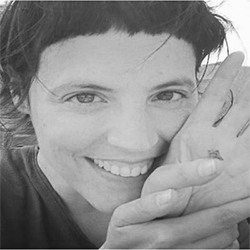
I felt that I could release my feelings and emotions by talking about topics that I had always dealt with in a much more rational way. Suddenly I could express what the idea of the forest suggested to me without the filter of having to be scientifically correct. LUCÍA GALIANO, Infrastructure Coordinator at CREAF.

I like that the resident artists can work together with the scientists, so that both parties can benefit from the research carried out in each field. During the activities I found that the scientists had a real interest in the research of the artists and vice versa. GEMMA PARIS, professor of Didactics of Musical, Plastic and Corporal Expression.

During the realization of the conceptual map, the scientists commented that the map was very complete because it contemplated many aspects related to the forest and they wondered why science did not contemplate these more emotional and cultural aspects. ROSA LLOP, co-director of the Master’s Degree in Design and Management of User Experience and Digital Services.

